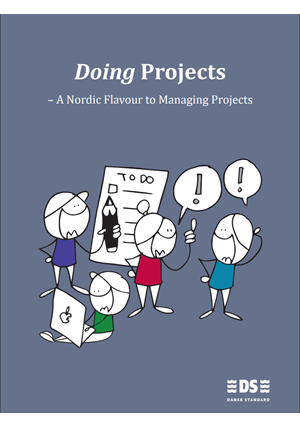
It is not hard to find a book about project management, but it is hard to choose one! Just as an illustration, at the time of writing, a search on Amazon.com for project management provides over 50,000 hits. So, why should you read this this book?
Most project management textbooksprovide normative “recipe” to managing projects. By reading these recipes, one might wonder how on Earth anyone can get it wrong? Yet, a closer look into project practice reveals that projects are much more challenging and that the recipes are based on not more than simplifications of the project ‘reality’, and sometimes, even detached from it. Not surprisingly, studies suggest that the use of such recipes do not necessarily lead to highly successful projects.
The management of projects should be adapted to their context and the people managing them, and we can only adapt if we understand why processes and tools exist, when they can help. The tools and concepts support the management of projects but do not equate it. As George Box once said, “all models are wrong, but some are useful”, the tricky bit is to identify when the tools and concepts are useful, and remember that, even when they are useful, they are not necessarily a truthful representation of the project, but a simplification that helps you DO projects. Such skills require experimentation and reflection on the practice of doing projects. In other words, projects require reflective practitioners, who not know what to do but also why to do it, and continuously improve their practices.
Unlike most of the other books, we do not offer a recipe to manage projects successfully. Instead, this book is the companion to the ISO 21500 & 21502 standards, Guidance on project management (hereafter referred to as ISO 21500). It provides a Nordic interpretation to the ISO 21500. Following the Nordic tradition, we propose a management, which centres on empowering practitioners to develop their own practices in collaboration with others. In this spirit, we would like to provide you with the foundation to transform the well-known processes suggested in the ISO21500 standards into contextualised actions, together with others, to achieve a meaningful purpose.
This book is formed by a combination of three elements:
- ISO 21500 standard, which represents a common language of project management.
- The Nordic “flavour”, which complements ISO 21500 through its focus on empowerment based on understanding, social relations, and the devel- opment of future-oriented meaningful projects.
- The four perspectives (purpose, people, complexity, and uncertainty) and context, which together provide a solid foundation to develop one’s own recipe for DOING projects, in line with both the ISO standard and the Nordic flavour.
The book is organised around 8 chapters. Chapter one gives you an introduction to the 3 main elements of the book. Chapter two presents various ways of defining projects, their key characteristics, and related concepts. Chapter three presents the context of projects. Hereafter follows the chapters of the four perspectives mentioned above. The final chapter outlines the principles for putting it all together and connecting the dots as a reflective practitioner doing projects.
Each of the 4 perspectives is divided into seven building blocks:
- Illustration based on a real-life project.
- Introduction to the perspective, why it is important, and its implication to project practice. This is the core of the chapter.
- Key challenges and classic mistakes in project management practice to open our eyes to why it is so hard to manage projects, and what are the typical mistakes in projects, including actions that appear intuitively correct but are not.
- Advice on how to DO it.
- Relationship with the ISO 21500.
- Relationship with the Nordic flavour.
- Summary.
The handbook on ‘Doing Projects’ is available for purchase in the Dansk standards webshop.